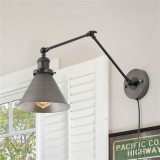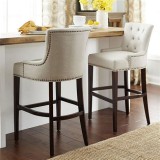Essential Aspects of Small Farmhouse Table Plans
Small farmhouse table plans serve as valuable blueprints for creating beautiful, functional tables that can enhance the ambiance of any dining or gathering space. Understanding the essential aspects of these plans is crucial for ensuring success in building a table that meets your specific needs and preferences.
This article explores the key aspects that define effective small farmhouse table plans, providing detailed insights to guide your planning and construction process.
1. Dimensions and Proportions
The dimensions of your table are critical for ensuring functionality and comfort. Consider the number of guests you intend to accommodate and the available space in your dining area. The standard length for a small farmhouse table ranges from 48 to 60 inches, with a width of 36 to 42 inches. The height typically falls between 28 to 30 inches.
Maintaining proper proportions is also essential. A well-balanced table will have a length-to-width ratio of approximately 1.5:1. Ensure the legs and aprons are in scale with the tabletop for a cohesive design.
2. Material Selection
Choosing the right material for your table is a crucial decision that will impact its durability, appearance, and longevity. Solid wood is a popular option for farmhouse tables, offering warmth, character, and durability. Common choices include pine, oak, and maple.
Reclaimed wood can add a unique, rustic charm to your table, while painted wood provides endless possibilities for customization. Consider the grain patterns, texture, and finish that best complement your desired aesthetic.
3. Structural Integrity
Ensuring the structural integrity of your table is paramount for safety and longevity. The joinery methods used to assemble the table should be strong and reliable. Mortise and tenon joints, dovetail joints, and pocket screws are commonly employed to provide secure connections.
The thickness of the tabletop and legs will also impact the table's durability. A thicker tabletop will be more resistant to warping and sagging, while thicker legs will provide better support. Consider reinforcing joints with glue, dowels, or biscuits for added strength.
4. Functionality and Features
Small farmhouse tables are often used for more than just dining. They can serve as a place for gathering, working, or crafting. Consider adding features that enhance functionality, such as drawers, shelves, or even a drop leaf that can extend the table's length when needed.
If you plan to use your table for regular meals, incorporating breadboards or a built-in lazy Susan can be convenient additions that improve usability.

Diy Small Farmhouse Table Plans And Tutorial

Farmhouse Table Updated Pocket Hole Plans Ana White

Diy Small Farmhouse Table Plans And Tutorial

Diy Farmhouse Table Free Plans Rogue Engineer
:max_bytes(150000):strip_icc()/decor-and-the-dog-farmhouse-table-56af6cc05f9b58b7d018acf1.jpg?strip=all)
14 Free Diy Woodworking Plans For A Farmhouse Table

40 Diy Farmhouse Table Plans Ideas For Your Dining Room Free

Diy Farmhouse Dining Table Free Plans And Tutorial
:max_bytes(150000):strip_icc()/ana-white-husky-farmhouse-table-57a205a55f9b589aa9dc2da9-fc649d77b4af4b8886c538403728a457.jpg?strip=all)
14 Free Diy Woodworking Plans For A Farmhouse Table

Farmhouse Table Updated Pocket Hole Plans Ana White

Diy Farmhouse Table Free Plans Rogue Engineer








